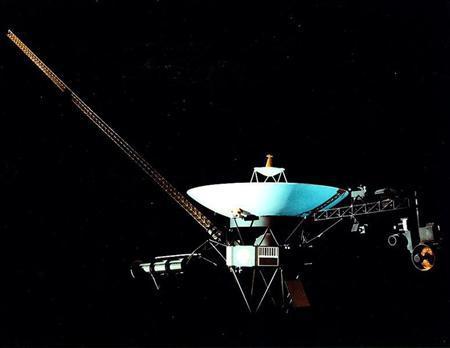
By Chris Wickham
LONDON | Fri Jun 15, 2012 12:36pm EDT
(Reuters) – The Voyager 1 space probe has reached the edge of the solar system, extending its record for being the most distant man-made object in space.
According to a statement from NASA’s Jet Propulsion Laboratory in Pasadena, California, the spacecraft is sending back data to Earth showing a sharp increase in charged particles that originate from beyond the solar system.
“Voyager scientists looking at this rapid rise draw closer to an inevitable but historic conclusion – that humanity’s first emissary to interstellar space is on the edge of our solar system,” NASA said in the statement.
Voyager 1, along with its sister spacecraft Voyager 2, was launched in 1977 and is now about 18 billion kilometers from the Sun. It is moving at a speed of about 17 km per second and it currently takes 16 hours and 38 minutes for data to reach NASA’s network on Earth. Voyager 2 is about 15 billion kilometers from the Sun.
Between them, the probes have explored all the giant planets of the solar system; Jupiter, Saturn, Uranus, and Neptune, as well as 48 of their moons.
They both carry a greeting for any extraterrestrial life they may bump into, a phonograph record and 12-inch gold-plated copper disk with sounds and images of life and culture on Earth selected by a group chaired by the famous space scientist Carl Sagan.
The charged particles hitting Voyager 1 originate from stars that have exploded elsewhere in the galaxy. They have been steadily rising as it approaches interstellar space but that trend has become sharper in recent months.
“From January 2009 to January 2012, there had been a gradual increase of about 25 percent in the amount of galactic cosmic rays Voyager was encountering,” said Ed Stone, Voyager project scientist at the California Institute of Technology in Pasadena.
“More recently, we have seen very rapid escalation in that part of the energy spectrum. Beginning on May 7, the cosmic ray hits have increased five percent in a week and nine percent in a month.”
The exact position of the edge of the solar system is unclear but another indicator that Voyager has entered interstellar space is expected to be a change in the direction of the magnetic fields around the space craft. NASA scientists are looking at data from the craft to see if this predicted change has occurred.
“The laws of physics say that someday Voyager will become the first human-made object to enter interstellar space, but we still do not know exactly when that someday will be,” said Stone. “The latest data indicate that we are clearly in a new region where things are changing more quickly. It is very exciting. We are approaching the solar system’s frontier.”
The plutonium power sources on the Voyager probes are designed to last until 2025. When they die, the probes will keep hurtling through space towards other stars in the Milky Way but they will no longer transmit data back to Earth.
(Editing by Rosalind Russell)

